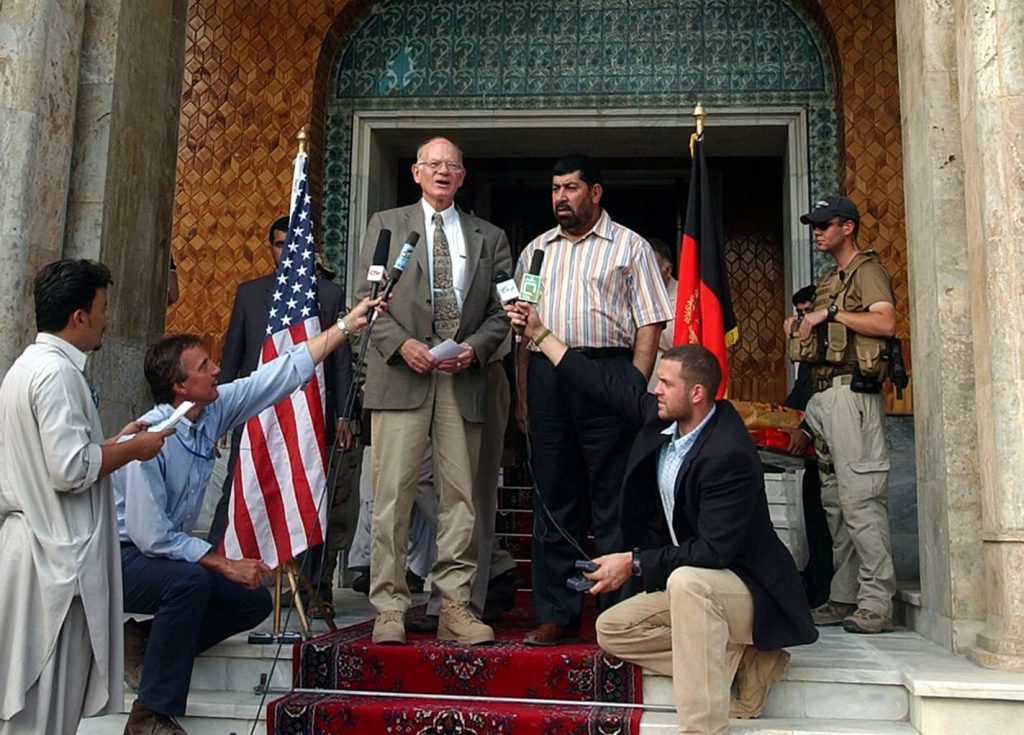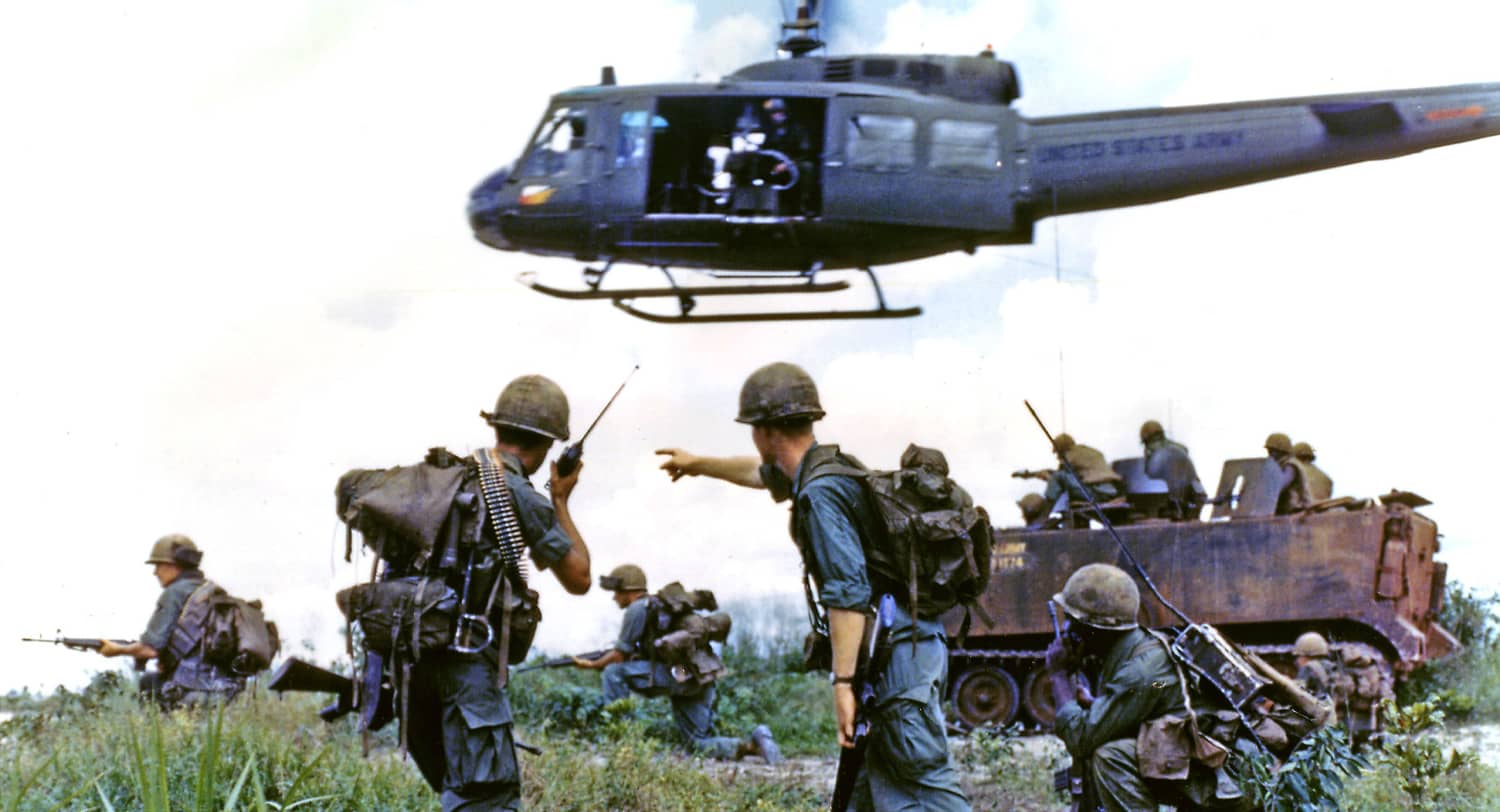With recent experiences of Iraq and Afghanistan in mind, three former US ambassadors look back at their earlier careers as infantry officers in Vietnam and offer the following lessons.
Ronald E. Neumann on Personnel Policy and Military Advising
Among the many lessons from Vietnam, I would start with the need to build a learning culture because so many other lessons flow from that. Simply put, an organization with a learning culture can draw lessons from mistakes and apply them to the future. A learning culture can take the time to acquire essential knowledge of a foreign culture and society and then shape policy considerations—what is feasible—and how means need to be brought into balance with goals.
The absence of such a learning culture is a distinguishing characteristic of the wars in Vietnam, Iraq, and Afghanistan. It was in Vietnam that the late John Paul Vann quipped that, “We don’t have 12 years’ experience. We have one year 12 times.” The personnel policies applied to all three wars guaranteed that this would remain true. When I was an infantry officer in Vietnam, many officers rotated jobs even within a one-year tour. At the end of my tour my company was returning to an area we had worked in months before. I was the only one left who knew where we had found enemy trails and positions—and I was leaving. They would have to find them all over again.
In Iraq and Afghanistan, military units rotated yearly, except for some with shorter rotations. Diplomats changed out yearly. Within three months of my arriving as ambassador in Kabul, nearly all my senior staff had departed. The problem was so pronounced that I referred to it as “the yearly institutional frontal lobotomy.”
Longer tours are essential. Senior diplomats and generals probably should remain in place at least three years, and subordinate leaders at least two years with staggered tours so that new arrivals learn from those remaining.
Just as every combat commander does not do equally well when placed in the role of advisor, every good diplomat is not well suited to what has been called expeditionary diplomacy. Some who volunteered for State Department duty in Afghanistan were great; others, there for the pay or to escape a failing marriage, were wildly unsuitable. Great care needs to be exercised to find, keep, and incentivize those—military or civilian—who have the talents for these types of situations.

Former Secretary of Defense Robert Gates referred to this personnel problem as having to go to war with the Pentagon in order to fight the wars in Iraq and Afghanistan. Institutional systems are not sympathetic to such micromanagement of assignments. If there is a lesson here, it is that commanders on the ground and very senior leaders in Washington are going to have to repeatedly struggle with their personnel departments to get the right people into the right positions.
From a long list of other lessons, a few seem particularly important. One is to understand that conflicts like those in the three wars in question cannot be waged successfully on short timetables. Trying to make the enemy conform to timelines set by domestic political considerations is a fool’s errand, yet that was what President Obama demanded when he clamped down and made totally unrealistic timetables on the surge in Afghanistan. No analyst will be able to foretell accurately how long such conflicts may last. The insurgency in Sri Lanka took 30 years to defeat. How an enemy will react and adapt is unknowable. If one is going to consider getting involved in another such war the lesson ought to be that it will take an unknown but long time. Perhaps one should plan for a couple of decades and then expect to adjust. If that isn’t acceptable then don’t start.
Equally important is to be honest with political leaders about what is possible. The military did not serve President Obama well when they indicated they could still succeed, even with his reduced timetable, although they may have believed they could get the timeline extended later based on earlier experience in the Balkans.
High quality reporting is essential both to the analysis of how the conflict is going and how policy might be adjusted. However, getting such reporting and analysis is daunting. In Vietnam, the emphasis on “happy talk” set America up for a major collapse of domestic political will after the battles of Tet in 1968 punctured the balloon of phony reporting. A Rand study comparing the metrics used in Vietnam with those in Afghanistan concluded that most of the reporting was highly flawed and that the reasons for the flaws were likely to continue. When I arrived in Baghdad, the daily press briefing was so devoted to good news that it had lost all credibility. When there actually was positive news, it was doubted.
Effective military advising at the level of building armies is something the US has done badly in all three wars. Special Forces do well at advising small units, but when the problem becomes larger our record is lamentable. In Vietnam, my platoon partnered (for training) with some Vietnamese platoons. I received no instruction on advising.
In Afghanistan, the advisory function was given to the National Guard. Several years went by in Afghanistan before any serious training or professional education for the trainers was instituted. No adequate system of rating progress in the military training area was ever found. Three different systems were tried. In each one, those who were conducting the training decided how well they were doing. At home, no unit could avoid an inspection, but in the three wars I witnessed, training progress was self-rated.
This is not simply a military problem. Getting the US out of the lead combat role became a decisive political issue in all three wars. To do that required the local forces to take over so the quality of our training became a central political issue.
Perhaps the most fundamental and difficult issue raised by all three wars is what to do about inadequate local leadership. Every study of insurgency, including the famous US Army/Marine Corps Counterinsurgency Field Manual, stresses the need to leave many important tasks to the local government. One of the most painful lessons from these wars is the necessity of effective local leadership; without it, we lose. But what does one do when that leadership proves inadequate, as was the case in all three wars considered here?
The American solution has been to come up with the plan we want the locals to embrace. This was the pattern, and it is a failed pattern. The lesson could be that we should not get involved without knowing the quality of local leadership. But in none of the three wars was this made clear in advance.
If the local leadership is clearly deficient, perhaps we should quit the endeavor. But that is more easily said than done when one is deeply mired in a war. We did that in Afghanistan, and the result was a shameful debacle and broken promises to Afghans who fought with us.
Another approach could be to continue support until the necessary leader emerges, as President Uribe did in Colombia or Ramon Magsaysay did in the Philippines. Every situation will be different. But the basic lesson is to understand that local leadership is critical and that we cannot substitute for it with our plans and concepts. Learning that lesson may be the hardest one of all.

Charles Ray on Planning for Chaos in Withdrawing From a War Zone
The August 30, 2021 withdrawal of US forces from Afghanistan ended the 20-year long war in that country and America’s longest combat deployment. General Mark Miley, the chair of the Joint Chiefs of Staff, termed the withdrawal of forces and the evacuation of noncombatants from Kabul “a logistical success but a strategic failure,” echoing in many ways the chaotic withdrawal from Saigon in April 1975.
Despite the 2020 agreement with the Trump administration, the Taliban violated it almost before the ink was dry by rocketing US and Afghan bases.
To say that the evacuation was chaotic is an understatement. Many Afghans who worked for us, including some with dual Afghan–American citizenship, were not evacuated, and the Pentagon reported that military equipment worth $7 billion was left behind in Afghanistan after the withdrawal.
Watching this event play out brought back memories of the withdrawal of US forces from Vietnam in 1973 and the final pull out of all Americans in 1975, and I was not surprised at how messy it all was. Wars are all too easy to start but difficult to withdraw from. While some of the criticism of the Biden administration is warranted, it should be tempered by the fact that withdrawing from a conflict area is never an orderly process.
Those who are old enough to remember the chaotic scenes of the withdrawal from Saigon after April 30, 1975 should see the parallels. The withdrawal of US combat forces occurred two years earlier, from January to March 1973, after the Paris Peace Accords were signed.
The Paris Accords were similar to the Afghan peace deal in that they called for a cease-fire, withdrawal of US forces, release of prisoners of war, and peaceful reunification. Like the Taliban, the North Vietnamese almost immediately violated the agreement by attacking South Vietnamese forces and troops and war materials as they moved into South Vietnam.
Withdrawing from a combat zone while armed forces are still in the field, even with signed agreements, depends on the honorable intentions of all parties to such agreements. We didn’t have either in Vietnam or Afghanistan. It’s a bit like being in a fist fight with a determined opponent and deciding to end it without being assured of your opponent’s intentions. To turn and walk away from such a situation leaves you vulnerable to being punched in the back.
My personal experience with the 1973 withdrawal shows just how messy such an operation can be. I was eight months into my second tour in Vietnam when the accords were signed, and I had been assigned to the military intelligence group that provided intelligence support to the Military Assistance Command in Vietnam. The month before the accords went into effect were some of the most violent of the war, with the North Vietnamese forces maneuvering for the most strategic positions in advance of the cease-fire. These operations included a rocket attack on Saigon’s Tan Son Nhut Airbase in December. My unit was located on the base not far from the runway and caught one of the rocket hits, nearly destroying my office, which I was fortunately not in at the time.
The real chaos started for me after the cease-fire went into effect. My unit sent me and another officer to Bangkok in February 1973 to transfer some important operational files. The files were voluminous, and the handover took almost a week. When we returned to Saigon we found our offices vacated and no sign of our unit. We checked with the personnel office and were informed that our unit had received its withdrawal notice and had returned to the US. No one in the group had thought to pick up a phone and call Bangkok to let us know. We were finally able to finagle flights out of Saigon. I was assigned to a unit in Okinawa and ended up strap-hanging on an Air America logistics flight.
According to a report in the San Diego Union-Tribune in 2012, the US left behind $5 billion worth of military equipment in 1973 when US forces were withdrawn. This figure, by the way, is completely separate from the equipment that was jettisoned during the hasty 1975 evacuation. Moreover, the $5 billion in equipment left behind in 1973, when adjusted for inflation, would be approximately $33 billion in today’s dollars.
The government was faulted for “leaving Americans behind in Afghanistan.” Often overlooked is the fact that most of those who were unable to evacuate had been advised to leave earlier on flights out of Kabul but had chosen to stay. In Vietnam, many of those left behind were the children of US servicemen and their mothers who were either unable to get to evacuation points in time or whom we were unable to reach.
We should do all that we can to help those who have helped us in a war, but we must never think that things will go smoothly no matter how much we plan. The best military plan in the world goes out the window when the first shot is fired, and this includes withdrawal plans.
Wars are easy to start but hard to stop. As Machiavelli wrote in The Prince, published in 1532: “People may go to war when they will, but cannot always withdraw when they like.”

James Jeffrey on the Strategic Pitfalls of Limited Wars of Choice
The Vietnam war remains the seminal experience of my life 50 years afterwards despite some other striking episodes later as a diplomat (being on the ground for the end of the Cold War in Germany, working in postwar Iraq). It’s not only because I was young and my life was on the line (although Vietnam was not consistently as dangerous as Iraq in 2004). It was because of the juxtaposition of Vietnam as a reflection and accelerant of social upheaval in the US in some respects more dramatic than today. It was also the blind unwillingness of smart, decent people whom I respected to see reality when it crossed significant political and ideological lines (similar to today).
For my generation, the boomers (and especially its educated public policy elite), the issue of Vietnam and its lessons were resolved forever with the draft resistance movement, Kent State, movies like “Platoon” and “Coming Home” that portrayed those of us in Vietnam as either war criminals or victims, topped by Neil Sheehan’s Pulitzer-winning book, Bright Shining Lie. That book deconstructed the one great tragic hero of the war, John Paul Vann, as a man who had once deeply understood the conflict and advocated slipping into the jungle at night with a knife, but who was allegedly transformed into an ogre symbolizing America’s evil by directing B-52 strikes when he died. Of course, in 1972, Vann wasn’t fighting guerrillas anymore but three North Vietnamese army divisions in the Central Highlands and stopping them—something you needed B-52’s, not knives, to do.
Afghanistan, like Vietnam, was intended by the US as a limited war. The US government tends to wage less costly and less risky “wars of choice” because the local stakes are not high in these wars, in which the commitment is often limited and unenthusiastic, while that of its local adversary is total. The results are often compromised endings. In an essay reviewing Ken Burns’ Vietnam War documentary, I called this the “contradictions of containment.”
In both Vietnam and Afghanistan, we witnessed what happens when US air support is quickly withdrawn. The decisive move of the Vietnam War turned out to be the North Vietnamese army’s conventional invasion in 1975. The rapid collapse of the South Vietnamese forces would seem to suggest that victory was inevitable, but it was not. The 1975 offensive was largely a carbon copy of the disastrously failed North Vietnamese invasion in 1972. But South Vietnamese troops had won in 1972 because they were backed by massive US air power and logistics. The US military provided virtually nothing to Saigon in 1975, because of Congressional blocks.



